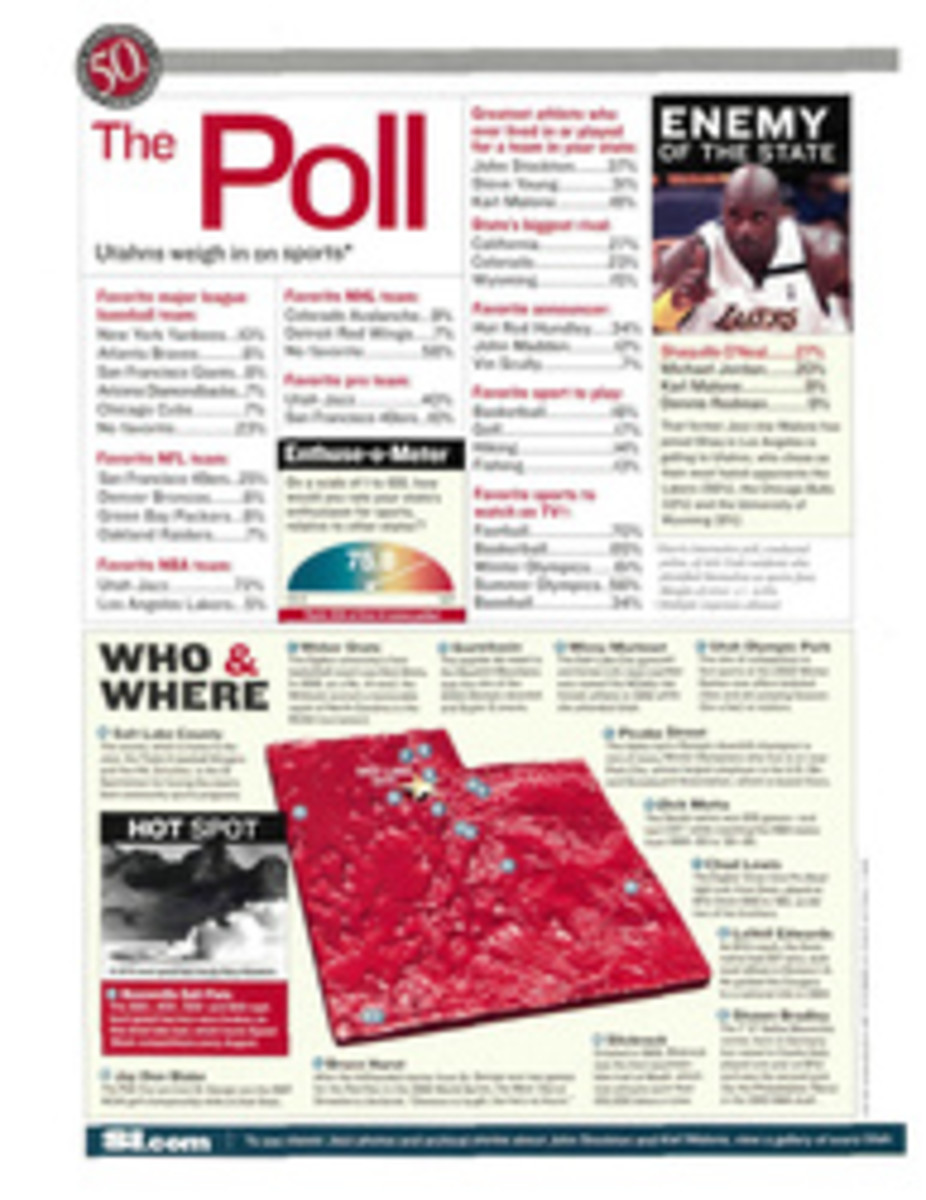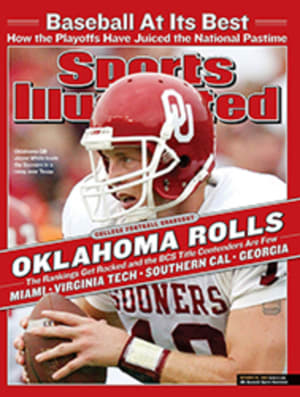
A Memorable Ride BILL SHOEMAKER 1931-2003 In a life of steep ups and downs, the consummate jockey showed an extraordinarily sensitive touch with horses
Sometimes it's what you don't do that brings the millions, the
trophies, the ladies. Bill Shoemaker didn't try to turn a horse
to butter with his riding whip. He didn't rattle the reins or
frantically flap his legs, even if he was behind a wall of
horseflesh as he entered the homestretch. Shoemaker sat so still
on a moving thoroughbred that when he first came on the scene in
California in 1949, track officials worried about the impression
he gave: This kid, they said, looks like he's stiffing his
horses.
Actually, he was unstiffing them, getting them to relax and feel
good about themselves, using Dale Carnegie techniques on $3,000
claimers. It was a style born of necessity--at 4'11" and 95
pounds Shoemaker was small even for a jockey; he couldn't muscle
a 1,000-pound stallion if he tried--but it worked. At the end of
his first season he was the second-leading rider in the U.S. When
he died in his sleep last week at age 72, after 8,833 wins and a
life of ups and downs steep even by racetrack standards, he was
the picture next to jockey in the dictionary.
"Horses just ran for him," says Laffit Pincay, the only rider
ahead of Shoemaker on the alltime wins list. "He could take
horses no one else could do anything with and make them go." Not
that he specialized in second-rate stock: Shoemaker rode Gallant
Man, Round Table, Sword Dancer, Northern Dancer, Damascus, Dr.
Fager, Forego and John Henry, champions all. He guided
Spectacular Bid ("The best I ever rode," he said) to 12 victories
in the colt's final 13 starts. But he didn't need the best horse
to win, or the best luck. Ferdinand, his $17.70-to-$1 shot in the
1986 Kentucky Derby, was pinched back at the start behind 15
rivals, then knocked twice into the rail before the first turn.
Refusing to panic, Shoemaker convinced his colt that he was still
in the hunt. Down the backstretch Ferdinand picked up momentum.
When a hole suddenly opened along the rail as they turned for
home, Shoemaker saw it and entered it instantly. Daylight and
victory. Roses and champagne. The Shoe was 54 years old, and his
beautiful third wife was shouting that she loved him.
Not every day at the races was so glorious. Although he won four
Kentucky Derbys (with Swaps, Tomy Lee, Lucky Debonair and
Ferdinand), the Triple Crown eluded him, and he was outdueled by
Eddie Arcaro aboard Nashua in the ballyhooed 1955 match race with
Swaps. Two years later Shoemaker misjudged the Churchill Downs
finish line, standing up early in the stirrups, and cost Gallant
Man the Derby as Iron Liege flew by. "I didn't make any excuses,"
Shoemaker said. He called it a "boo-boo" and moved on.
"Win or lose," says Pincay of their days in California, "we'd go
out to Chasen's for drinks." Shoemaker predicted Ferdinand's
Derby win to SI's Bill Nack "over drinks and dinner," Nack said,
and the third paragraph of a 1977 PEOPLE profile mentions that
the jockey drinks moderately, usually bourbon. Shoemaker was
legally drunk the April evening in '91 when his SUV tumbled off a
highway in San Dimas, Calif., leaving him with a dislocated spine
and a life as a quadriplegic.
Born weighing less than two pounds, Shoemaker wasn't supposed to
make it through his first night in Fabens, Texas. But his
grandmother put him in a shoebox and warmed him on the stove (or
so the legend goes), and he grew strong if not much. After his
parents divorced and he moved to El Monte, Calif., with his
father, B.B., he planned to try out for football, but the high
school didn't have size 1 1/2 cleats. So, like Red Pollard,
Seabiscuit's jock, he dabbled in boxing, winning a Golden Gloves
title in Los Angeles. Horses came into his life at 14 when a girl
he knew suggested that he consider the then glamorous profession
dominated by Arcaro, Ted Atkinson and Johnny Longden. He looked
into the possibility and never looked back.
He rode 40,350 horses and won an astounding 21.9% of his races.
Following an international farewell tour that ended in February
1990, Shoemaker retired from riding and set up shop as a trainer
at Santa Anita. His gross earnings that year were $32,000. After
the accident he persevered, arriving at the barn each day in his
electric wheelchair, but his image in the racing community was
sullied by his refusals to fess up to driving drunk and by his
strategy of suing everyone in sight over the accident. (He
eventually settled with Ford for $1 million.) Just when people
should have been pulling for Shoe, he was out of favor on the
backstretch.
The resentment faded, though, worn away by the sight of him
coming around, smiling and talking to young riders about the
tricky art of getting a racehorse to run. "A lot of people have
it a lot worse than I do," he'd say, even after his training
career evaporated and his third marriage failed. Before Pincay
retired with 9,530 winners last April, Shoemaker would visit his
old pal in the jocks' room at Santa Anita, and when Pincay said,
"I like my horse in the eighth," Shoe would tell his assistant to
make a note. "He liked to play the Pick Six," Pincay says, with a
laugh. "And if the horse I gave him didn't win, he would never
mention it, never stop smiling. That's what being around horses
taught him. You take your wins and your losses and you never give
up. There's always another race."
B/W PHOTO: AP WINNING BIG Shoemaker (with his third wife, Cindy, in '78)claimed his first of four Derby victories aboard Swaps in '55.
B/W PHOTO: ART ROGERS/LOS ANGELES TIMES

